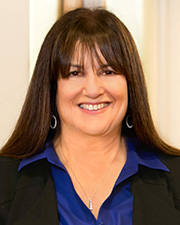


When looking to sell a property, real estate investors face major tax obligations from the resulting profits of the property being sold.
To build their net worth faster, property owners can use the process of a 1031 Tax Deferred Exchange, where sellers can shift funds from the property they are selling to a new purchase without having to pay capital gains taxes. This process is guided by a qualified intermediary (QI).
According to the Internal Revenue Service’s Code 1.1031(k), a person owning real estate for investment or business purposes can sell their property and then purchase “like-kind” property in order to defer paying their capital gains tax. The desired replacement property must be identified by the property owner, now known as an exchanger, within 45 days. The new property must also be settled within 180 days of the date of settlement of the relinquished property.
“Like-Kind” Properties
To qualify for a 1031 tax deferred exchange, the exchanger needs to find a property considered “like-kind.” “Like-kind” doesn’t refer to the quality of a property but rather the property’s nature. For example, if you own a single-family rental property and wish to purchase a farm as a replacement, that falls under the definition of “like-kind.” Exchanging a lot for an office building also meets those guidelines. The IRS broadly defines that any kind of real estate may be exchanged for any other kind of real estate.
Replacement property requirements
The replacement property must be of equal or greater value than the relinquished property and all cash equity from the sale must be reinvested to have no tax on the sale of the relinquished property. If the exchanger buys a property of lesser value, the difference of the two property values is subject to capital gains tax and unrecaptured depreciation tax.
A personal primary residence doesn’t fall under the guidelines for a 1031 exchange. Spec houses or properties designated for a quick turnaround, like purchasing a home and completing quick improvements for immediate sale, are not eligible for a tax deferred exchange.
The process
1. The property to be relinquished goes under contract.
2. The property owner secures a QI and enters into an exchange agreement.
3. The QI is assigned the sales contract.
4. The property sale is completed and the QI places the proceeds in a short-term escrow account.
5. The property owner conveys the title of the relinquished property to the buyer.
6. Within 45 days, the property owner identifies up to three replacement properties and informs the QI of their choice. In addition to the 45-day contingency, the property must be located in the United States and be settled within 180 days.
7. The property owner enters into a contract to purchase the replacement property.
8. The sales contract for the new property is then assigned to the QI.
9. Closing on the replacement property occurs within 180 days.
10. The QI transfers the proceeds from the short-term escrow account to the replacement property seller through the closing attorney or title company, with the exchanger receiving any remaining funds, provided there are any, from the account.
11. Title is conveyed to the property owner from the seller of the replacement property.
Despite stringent guidelines and restrictions on tax-deferred exchanges, investment and business property owners can benefit greatly from utilizing this type of transaction, including saving thousands of dollars in taxes.
Randy Kaston is the director of business law group at Ligris + Associates and John Starling is the senior vice president of Northern Bank’s 1031 Exchange, LLC, Boston, Mass.


